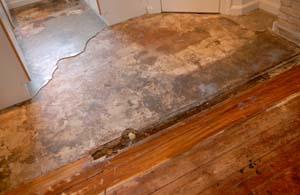We have stumbled upon this great article relating to Ways to Reduce The Risk Of Fire And Water Damage down the page on the net and concluded it made perfect sense to write about it with you here.

Though water gives life, water intrusion on parts where it's not expected to be can cause damage. If the water soaks right into your framework, it can peel off away surface areas as well as deteriorate the structure. Mold and mildew as well as mildew also grow in a wet setting, which can be unsafe for your health and wellness. Residences with water damage smell old and stuffy.
Water can come from lots of resources such as tropical cyclones, floodings, burst pipelines, leakages, and sewer problems. In case you experience water damages, it would certainly be good to understand some safety and security preventative measures. Here are a few guidelines on exactly how to manage water damages.
Do Prioritize Home Insurance Protection
Water damage from flood dues to heavy winds is seasonal. You can also experience an abrupt flooding when a malfunctioning pipe all of a sudden bursts right into your house. It would be best to have residence insurance coverage that covers both acts of God such as all-natural disasters, and emergency situations like busted plumbing.
Do Not Forget to Switch Off Utilities
In case of a catastrophe, specifically if you live in a flood-prone location, it would be a good idea to turn off the primary electric circuit. This cuts off power to your entire house, stopping electric shocks when water comes in as it is a conductor. Don't forget to turn off the primary water line shutoff. Furniture will move around and also create damage when floodwaters are high. Having the main shutoff turned off avoids further damage.
Do Keep Proactive and Heed Climate Alerts
Listen to emptying warnings if you live near a creek, river, or lake. Doing so minimizes potential building damage.
Do Not Overlook the Roofing System
Prior to the weather transforms shocking, make certain you have a roof covering evaluation. Actually, it would be prudent to get this solution yearly as it can mitigate complex problems. You can prevent rainfall damages if there are no holes as well as leaks in your roofing system. Your roofing professional will additionally deal with malfunctioning seamless gutters or any other indications of weakening. This will certainly avoid water from streaming down your wall surfaces as well as soaking your ceiling.
Do Focus On Little Leaks
A ruptured pipe does not occur overnight. Generally, there are warnings that suggest you have actually damaged pipelines in your home. You might discover gurgling paint, peeling wallpaper, water streaks, water discolorations, or dripping noises behind the wall surfaces. Eventually, this pipeline will rupture. Ideally, you need to not await points to rise. Have your plumbing fixed prior to it results in huge damage.
Don't Panic in Case of a Ruptured Pipe
When it comes to water damage, timing is crucial. Therefore, if a pipeline ruptureds in your home, immediately shut off your primary water shutoff to reduce off the source. Call a credible water damages repair expert for help.
Water offers life, water breach on parts where it's not meant to be can result in damages. Residences with water damage odor stuffy and also old.
Water damages from flood fees to hefty winds is seasonal. You might discover bubbling paint, peeling off wallpaper, water touches, water discolorations, or leaking sounds behind the wall surfaces. When it comes to water damage, timing is crucial.
Some Do's & Don't When Dealing with a Water Damage
DO:
Make sure the water source has been eliminated. Contact a plumber if needed. Turn off circuit breakers supplying electricity to wet areas and unplug any electronics that are on wet carpet or surfaces Remove small furniture items Remove as much excess water as possible by mopping or blotting; Use WHITE towels to blot wet carpeting Wipe water from wooden furniture after removing anything on it Remove and prop up wet upholstery cushions for even drying (check for any bleeding) Pin up curtains or furniture skirts if needed Place aluminum foil, saucers or wood blocks between furniture legs and wet carpet Turn on air conditioning for maximum drying in winter and open windows in the summer Open any drawers and cabinets affected for complete drying but do not force them open Remove any valuable art objects or paintings to a safe, dry place Open any suitcases or luggage that may have been affected to dry, preferably in sunlight Hang any fur or leather goods to dry at room temperature Punch small holes in sagging ceilings to relieve trapped water (don't forget to place pans beneath!); however, if the ceiling is sagging extremely low, stay out of the room and we'll take care of it DO NOT:
Leave wet fabrics in place; dry them as soon as possible Leave books, magazines or any other colored items on wet carpets or floor Use your household vacuum to remove water Use TV's or other electronics/appliances while standing on wet carpets or floors; especially not on wet concrete floors Turn on ceiling fixtures if the ceiling is wet Turn your heat up, unless instructed otherwise

Hopefully you enjoyed our article about Safety Tips To Prevent Fire And Water Damage. Thank you so much for finding the time to read our blog post. If you appreciated our article if you please make sure you remember to pass it around. I truly appreciate reading our article about Reducing Your Risk Of Water And Fire Damage At Home.